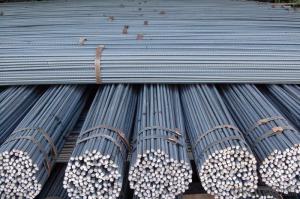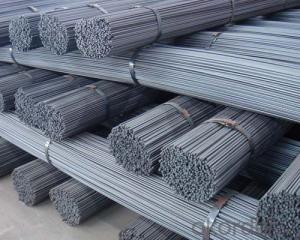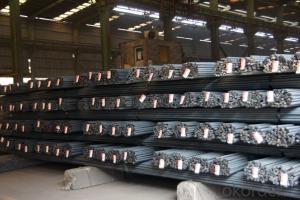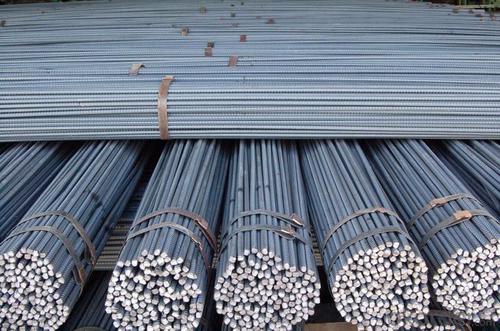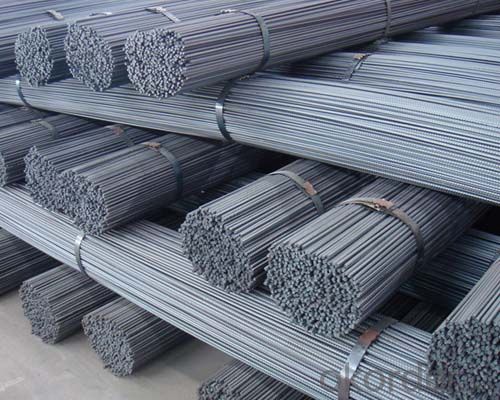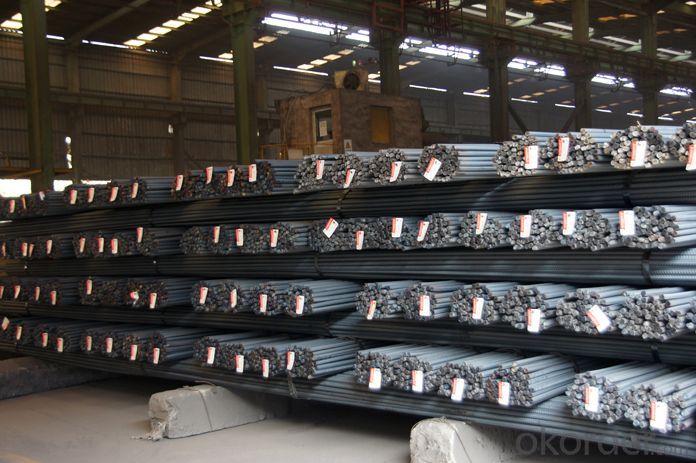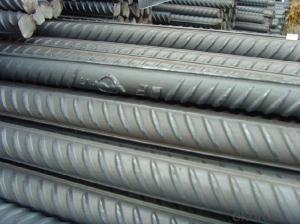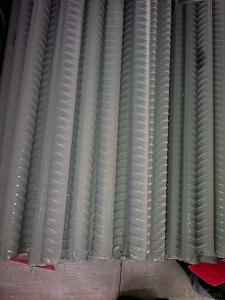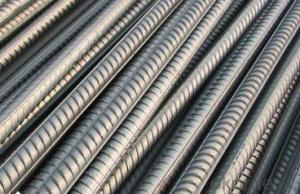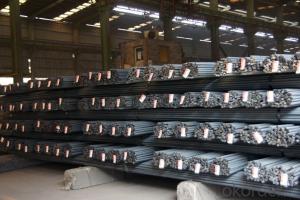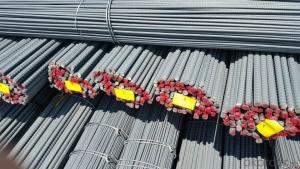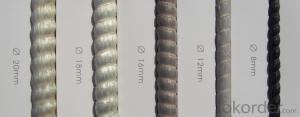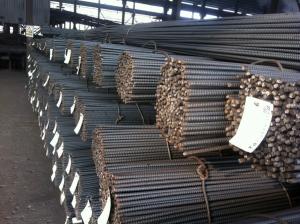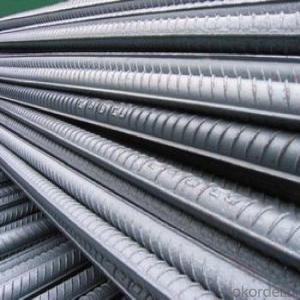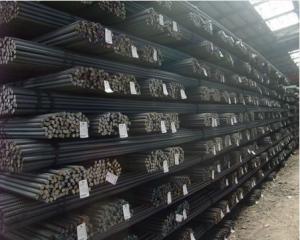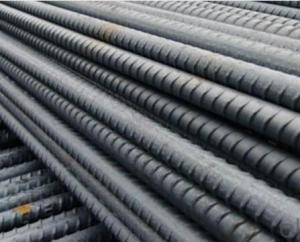HRB400 deformed bars with competitive price good quality
- Loading Port:
- Tianjin
- Payment Terms:
- TT OR LC
- Min Order Qty:
- 25 m.t.
- Supply Capability:
- 100000 m.t./month
OKorder Service Pledge
OKorder Financial Service
You Might Also Like
Product Description:
Specifications of HRB400 Deformed Steel Bar:
Standard | GB | HRB400 | |
Diameter | 10mm-32mm | ||
Length | 6M, 12M | ||
Place of origin | Hebei, China mainland | ||
Advantages | exact size, regular package, chemical and mechanical properties are stable. | ||
Type | Hot rolled deformed steel bar | ||
Chemical Composition: (Please kindly find our chemistry of our material based on HRB400 as below for your information)
Grade | Technical data of the original chemical composition (%) | ||||||
C | Mn | Si | S | P | V | ||
HRB400 | ≤0.25 | ≤1.60 | ≤0.80 | ≤0.045 | ≤0.045 | 0.04-0.12 | |
Physical capability | |||||||
Yield Strength (N/cm²) | Tensile Strength (N/cm²) | Elongation (%) | |||||
≥400 | ≥570 | ≥14 | |||||
Theoretical weight and section area of each diameter as below for your information:
Diameter(mm) | Section area (mm²) | Mass(kg/m) | Weight of 12m bar(kg) |
18 | 254.5 | 2.00 | 24 |
20 | 314.2 | 2.47 | 29.64 |
22 | 380.1 | 2.98 | 35.76 |
Usage and Applications of HRB400 Deformed Steel Bar:
Deformed bar is widely used in buildings, bridges, roads and other engineering construction. Big to highways, railways, bridges, culverts, tunnels, public facilities such as flood control, dam, small to housing construction, beam, column, wall and the foundation of the plate, deformed bar is an integral structure material. With the development of world economy and the vigorous development of infrastructure construction, real estate, the demand for deformed bar will be larger and larger..
Packaging & Delivery of HRB400 Deformed Steel Bar:
Packaging Detail: products are packed in bundle and then shipped by container or bulk vessel, deformed bar is usually naked strapping delivery, when storing, please pay attention to moisture proof. The performance of rust will produce adverse effect.
Each bundle weight: 2-3MT, or as required
Payment term: TT or L/C
Delivery Detail: within 45 days after received advanced payment or LC.
Label: to be specified by customer, generally, each bundle has 1-2 labels
Trade terms: FOB, CFR, CIF
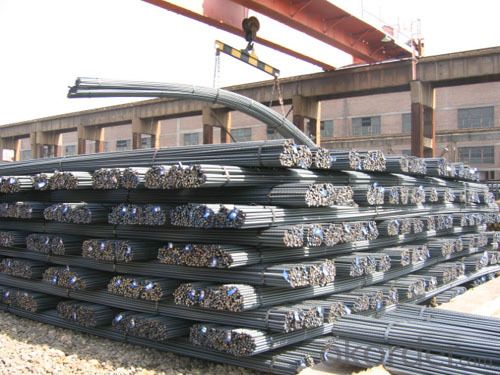
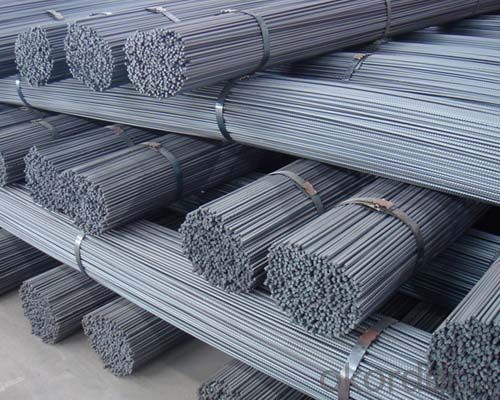
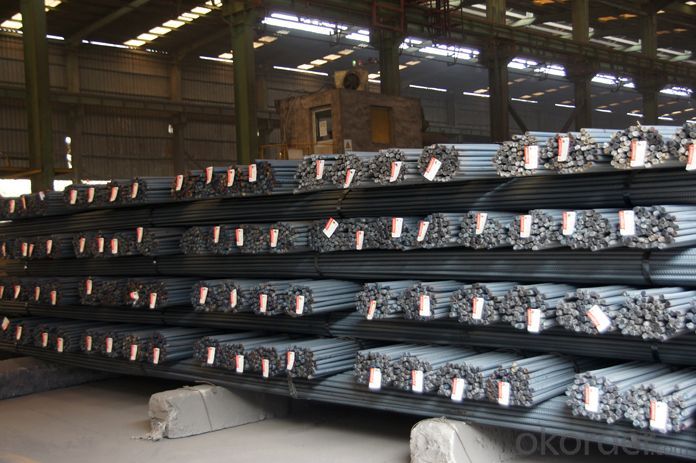
*If you would like to get our price, please inform us the size, standard/material and quantity. Thank you very much for your attention.
- Q: Can steel rebars be bent or shaped?
- Yes, steel rebars can be bent or shaped. Rebars are commonly used in construction to reinforce concrete structures, and they are often bent or shaped to fit the specific design requirements of the project. The bending or shaping of rebars can be done using various tools and techniques, such as manual bending, mechanical bending machines, or hydraulic presses. The ability to bend or shape steel rebars allows for the creation of complex and customized reinforcement patterns, ensuring that the concrete structure can withstand the intended loads and stresses.
- Q: Are there any environmental concerns associated with steel rebars?
- Yes, there are some environmental concerns associated with steel rebars. One of the main concerns is the production process of steel rebars, which involves the extraction and processing of iron ore. This process is energy-intensive and can contribute to greenhouse gas emissions and air pollution. Additionally, the mining of iron ore can lead to habitat destruction and the displacement of wildlife. Another environmental concern is the potential for steel rebars to corrode over time, especially in marine and coastal environments. Corrosion can lead to structural degradation, which may require replacement and additional resources and energy consumption. Furthermore, the disposal of steel rebars at the end of their lifecycle can also pose environmental challenges. If not properly managed, steel rebars can end up in landfills, taking up valuable space and potentially releasing harmful substances into the environment. However, it is important to note that steel rebars are often recycled, which can help mitigate some of these environmental concerns. Recycling steel rebars reduces the need for new production, conserves natural resources, and decreases energy consumption and greenhouse gas emissions. Additionally, the use of recycled steel rebars can help prevent the disposal of these materials in landfills. Overall, while there are environmental concerns associated with steel rebars, proper management and recycling practices can help minimize their impact on the environment.
- Q: What's the difference between rebar and thread steel?
- Different strength. The design strength of round steel (HPB235) is 210MPa; the strength of thread steel is higher than that of round bar; the design strength of HRB335 is 300MPa; the design strength of HRB400 is 360MPa.
- Q: The difference between wire and thread steel, wire and thread steel difference knowledge
- The surface of the ribbed steel is ribbed, the ordinary hot-rolled bar is HRB, and the fine grained hot rolled steel bar is HRBF. The main use of thread steel: widely used in housing, bridges, roads and other civil engineering construction. Rebar main origin: steel manufacturers in China are mainly distributed in the north and northeast, North China, Tang Gang, such as Shougang steel, bearing steel, such as the northeast northwest Taiwan, Fushun Steel, these two regions accounted for more than 50% of the total output of thread steel.
- Q: Can steel rebars be painted or coated?
- Yes, steel rebars can be painted or coated. Painting or coating steel rebars is a common practice in construction and engineering to provide protection against corrosion and to enhance their aesthetic appearance. The process involves applying a layer of paint or coating material onto the surface of the rebars. This coating acts as a barrier, preventing moisture and other corrosive elements from reaching the steel surface, thus prolonging the lifespan of the rebars. Additionally, painting or coating the rebars can also help in differentiating them from other construction materials or providing color-coding for identification purposes. It is important to use high-quality paint or coating materials that are specifically designed for steel applications to ensure proper adhesion and durability.
- Q: What is the effect of carbon content on the strength of steel rebars?
- The carbon content in steel rebars has a significant effect on their strength. Generally, a higher carbon content increases the strength of the steel rebars. This is because carbon atoms strengthen the iron lattice structure in the steel, making it harder and more resistant to deformation or breaking under stress. However, excessively high carbon content can lead to brittleness, reducing the overall toughness and ductility of the rebars. Therefore, finding the right balance of carbon content is crucial to ensure optimal strength and structural integrity of steel rebars.
- Q: Are steel rebars suitable for use in wastewater treatment plants?
- Yes, steel rebars are suitable for use in wastewater treatment plants. Wastewater treatment plants often require reinforced concrete structures to withstand the harsh and corrosive environment of the facility. Steel rebars, which are commonly used to reinforce concrete, provide the necessary strength and durability for these structures. They are resistant to corrosion, which is essential in a wastewater treatment plant where the presence of chemicals and corrosive elements is high. Additionally, steel rebars offer excellent tensile strength, ensuring that the concrete structures can withstand heavy loads and pressures. Overall, steel rebars are a reliable and appropriate choice for use in wastewater treatment plants to ensure the longevity and structural integrity of the facility.
- Q: How do steel rebars prevent cracks in concrete structures?
- Steel rebars prevent cracks in concrete structures by providing tensile strength to the concrete. When the concrete dries and hardens, it becomes strong in compression but weak in tension. The presence of steel rebars within the concrete adds tensile strength, allowing the structure to resist cracking under tensile stresses. The rebars act as reinforcement, absorbing and distributing the tensile forces throughout the concrete, preventing the formation and propagation of cracks.
- Q: What is the relationship between the price and the hot coil steel prices?
- The rebar prices are more special, in addition to energy-saving emission reduction, I personally think that the relationship between market supply and demand. In previous years, coil prices relatively high prices and price, usually in the coil as a goal. I think the price is not reasonable, but I don't understand, because I'm not an expert. Of course, the experts don't understand.
- Q: Can steel rebars be used in earthquake-resistant structures?
- Yes, steel rebars can be used in earthquake-resistant structures. Steel rebars provide strength and durability to reinforced concrete structures, making them capable of withstanding the forces and vibrations caused by earthquakes. The use of properly designed and placed steel rebars enhances the structural integrity and overall resistance of buildings against seismic events.
Send your message to us
HRB400 deformed bars with competitive price good quality
- Loading Port:
- Tianjin
- Payment Terms:
- TT OR LC
- Min Order Qty:
- 25 m.t.
- Supply Capability:
- 100000 m.t./month
OKorder Service Pledge
OKorder Financial Service
Similar products
Hot products
Hot Searches
Related keywords
